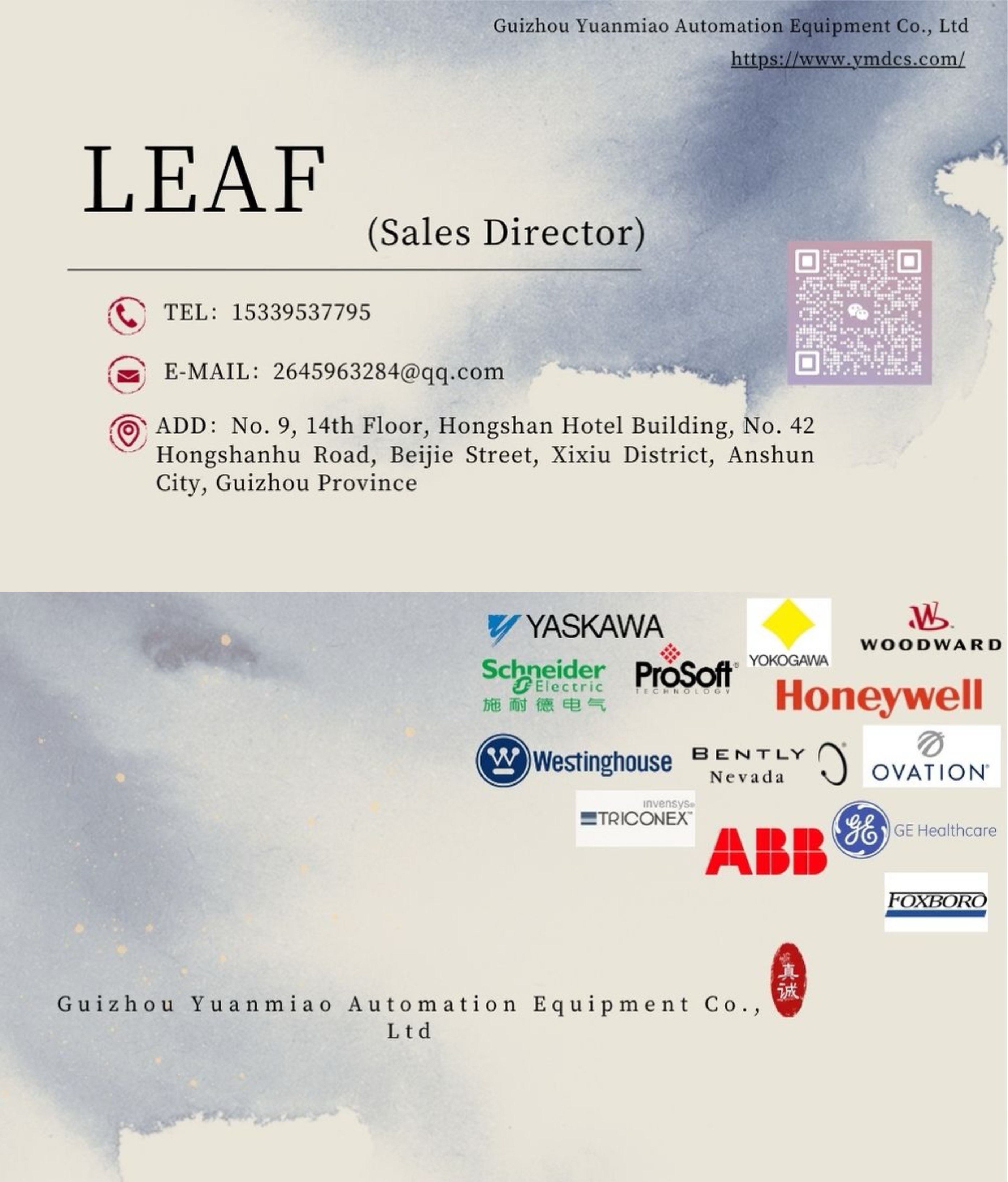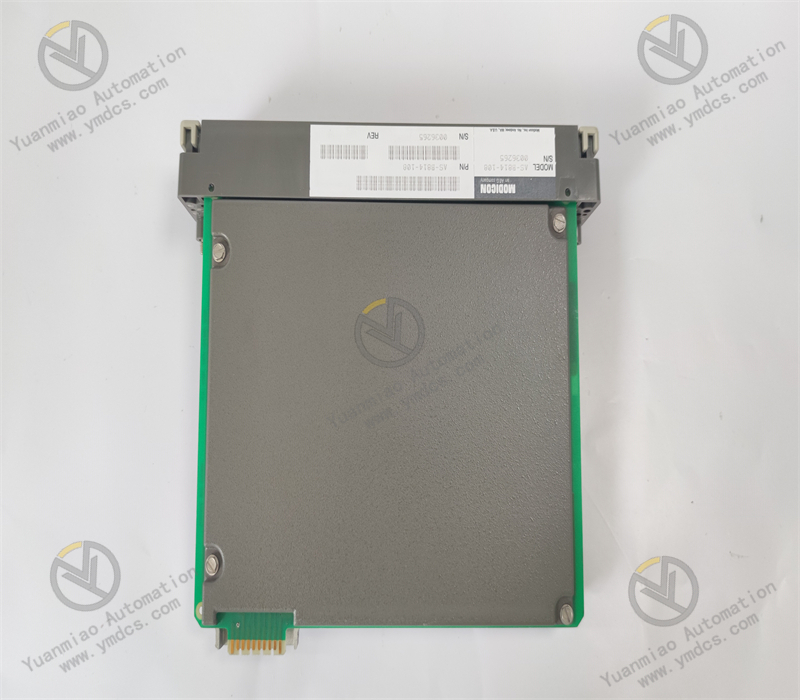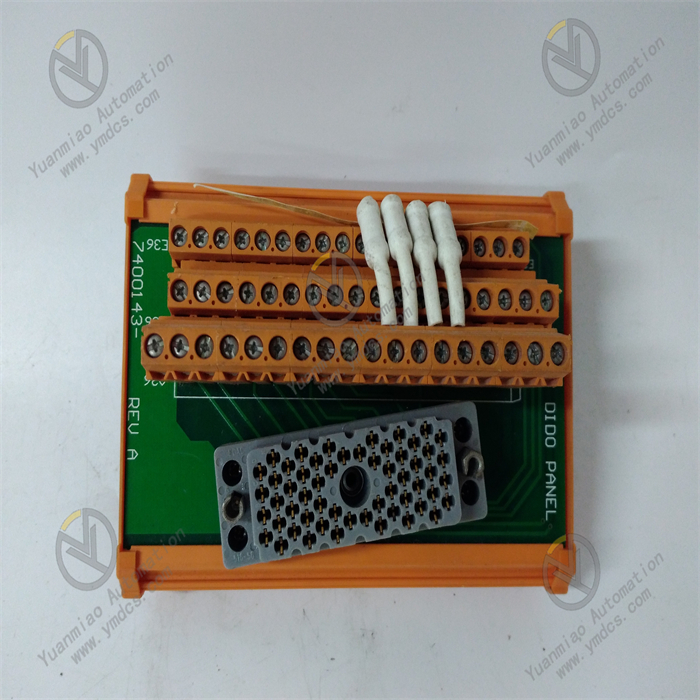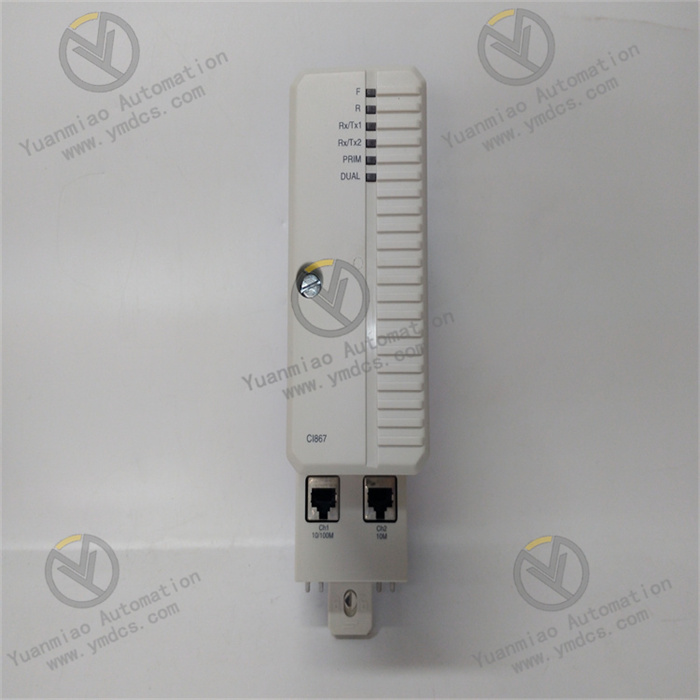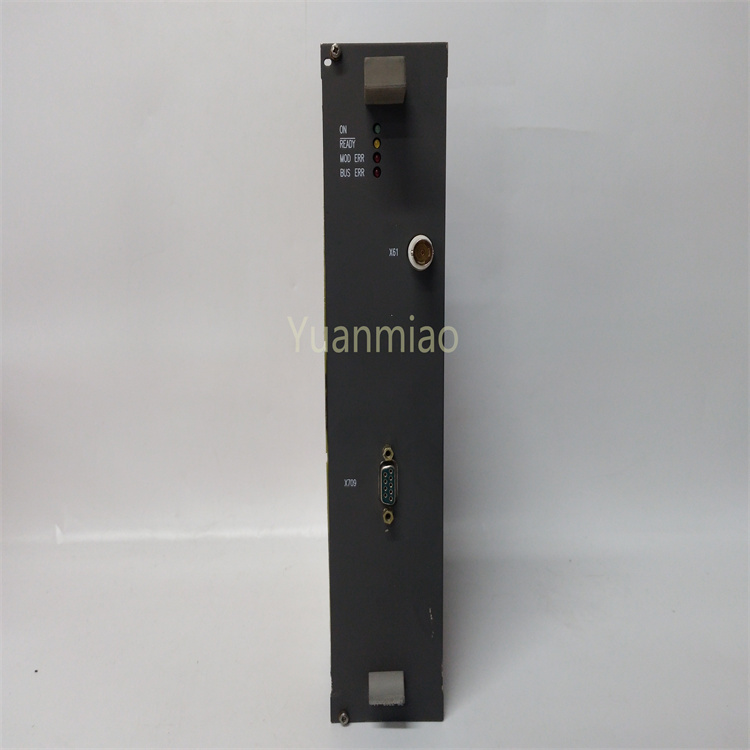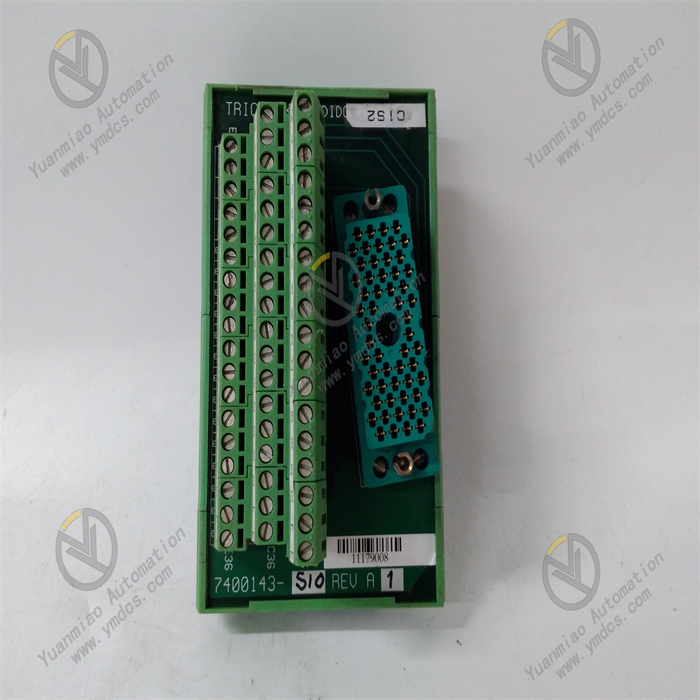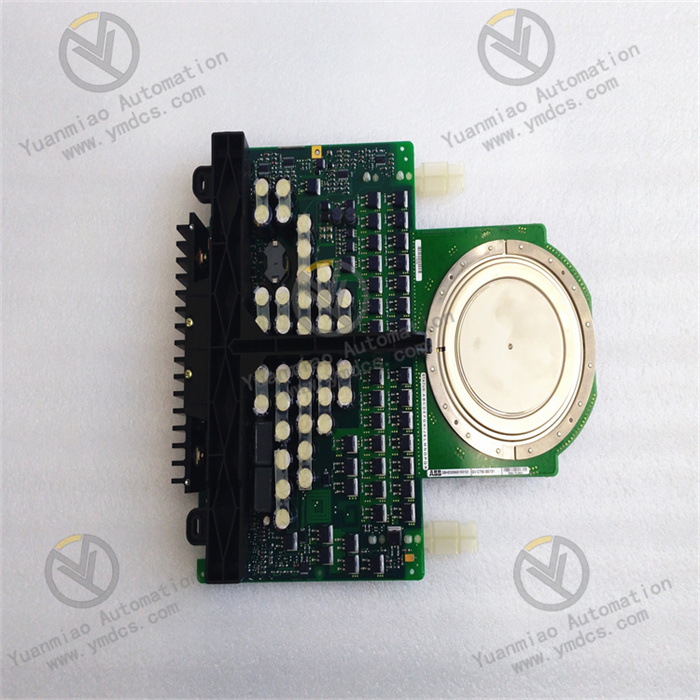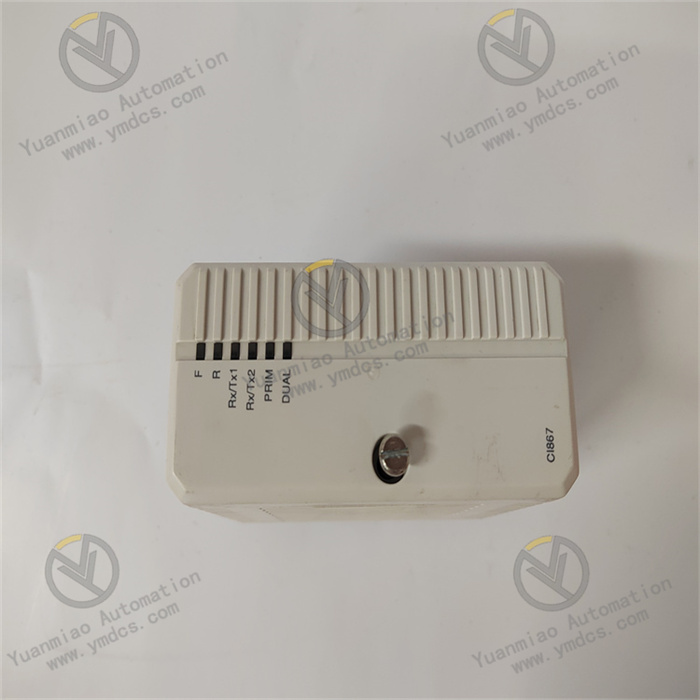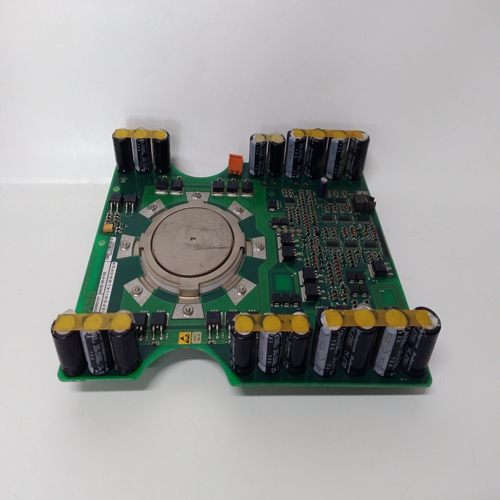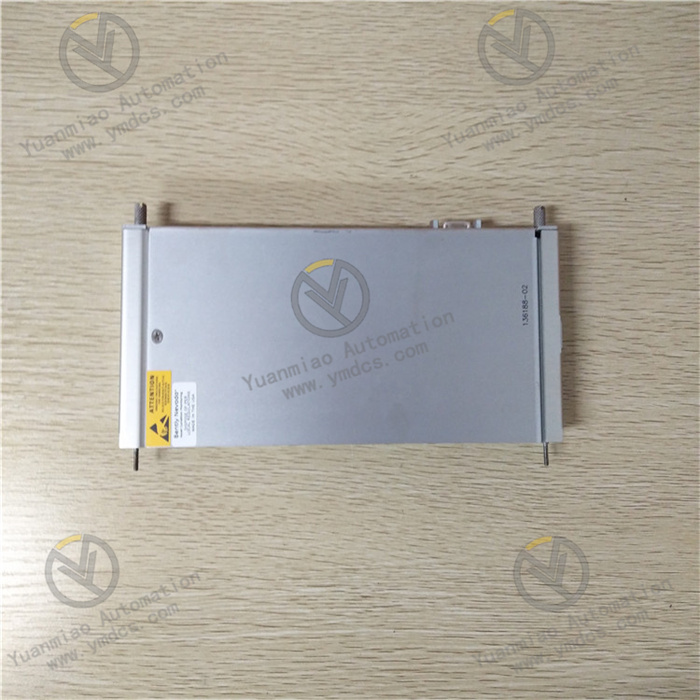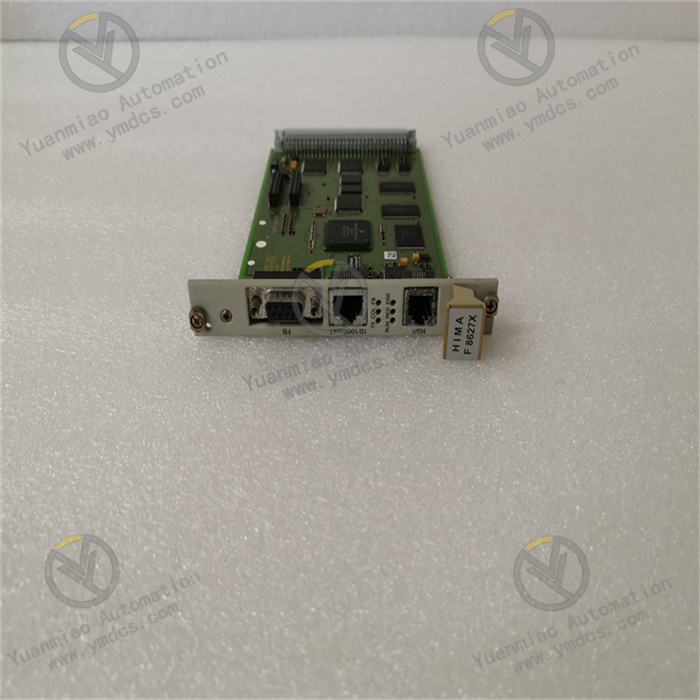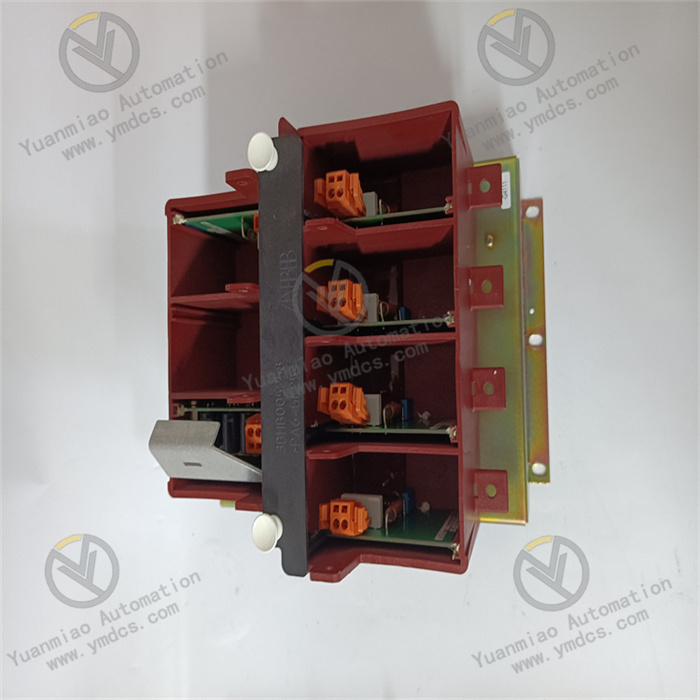Description
The B814-108 Relay Output Module converts signals from the PLC to eight independent relay outputs. Each output is capable of driving a relay, pilot lamp, motor starter, solenoid, or any other load up to 5.0 A. Each of the eight outputs is electrically isolated from the I/O bus and from the other seven outputs by the relay coil. The module is designed to withstand the high surge currents typical of industrial loads. The module is user configurable as to setting for normally open or normally closed operation of the relays as described below, and is compatible with other Modicon input modules. Assuming a normally open configuration, when the relay coil is energized, the relay contacts will conduct current from output A terminal to output B terminal. The B814 is initially shipped with all eight channels jumpered for the normally open configuration. You may optionally wire any of the channels for normally closed operation if desired. This is done by transferring a wire jumper from one tab to another on the printed circuit board.
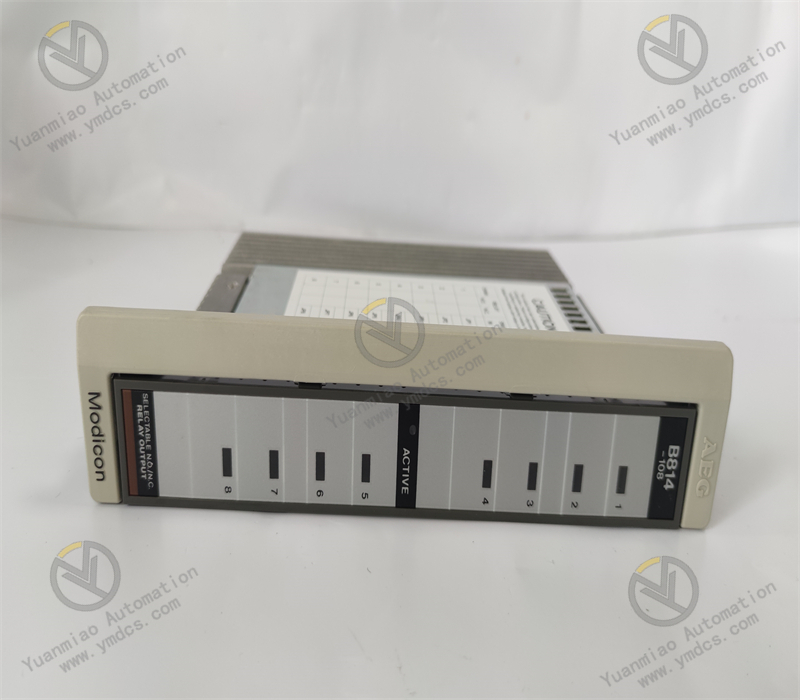
Relay characteristics of relays
The input signal x of the relay continuously increases from zero to the action value xx when the armature begins to draw, and the output signal of the relay immediately jumps from y=0 to y=ym, that is, the normally open contact from off to on. Once the contact is closed, the input x continues to increase, and the output signal y will no longer change. When the input quantity x drops from a value greater than xx to xf, the relay begins to release and the normally open contact is disconnected. We call this characteristic of the relay the relay characteristic, also called the input-output characteristic of the relay.
The working principle and characteristics of electromagnetic relay
Electromagnetic relays are generally composed of iron core, coil, armature, contact reed and so on. As long as a certain voltage is added to both ends of the coil, a certain current will flow through the coil, resulting in an electromagnetic effect, and the armature will overcome the pull of the return spring under the action of electromagnetic force attraction to attract the iron core, thereby driving the moving contact of the armature and the static contact (normally open contact). When the coil is powered off, the electromagnetic suction also disappears, and the armature will return to the original position in the spring's reaction force, so that the moving contact and the original static contact (normally closed contact) are released. This suction, release, so as to achieve the purpose of conduction in the circuit, cut off. For the "normally open, normally closed" contact of the relay, it can be distinguished in this way: the static contact in the disconnected state when the relay coil is not powered on is called "normally open contact"; The static contact in the connected state is called "normally closed contact".
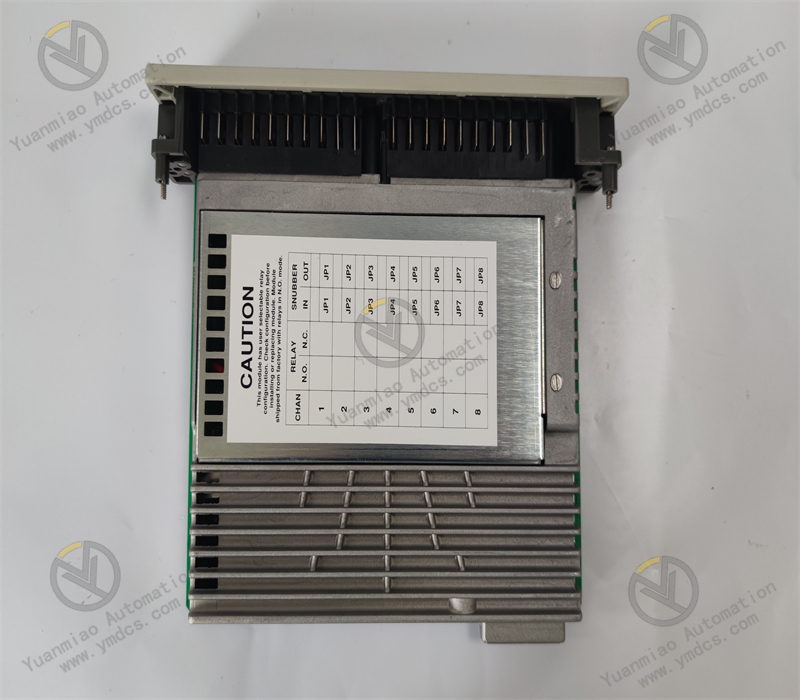
Selection of rated working voltage of relay
The rated operating voltage of relay is the most important technical parameter of relay. When using a relay, the working voltage of the circuit (that is, the circuit where the relay coil is located) should be considered first, and the rated working voltage of the relay should be equal to the working voltage of the circuit. Generally, the working voltage of the circuit is 0.86 of the rated working voltage of the relay. Note that the workpiece voltage of the circuit must not exceed the rated working voltage of the relay, otherwise the relay coil is easy to burn. In addition, some integrated circuits, such as the NE555 circuit can directly drive the relay to work, and some integrated circuits, such as the COMS circuit output current is small, need to add a transistor amplifier circuit to drive the relay, which should consider that the transistor output current should be greater than the rated working current of the relay.
When the NPN transistor is driven: when the transistor T1 base is input high voltage, the transistor is saturated and the collector becomes low, so the relay coil is energized and the contact RL1 is drawn. When the transistor T1 base is fed to a low current level, the transistor shuts off, the relay coil is powered off, and the contact RL1 is disconnected.
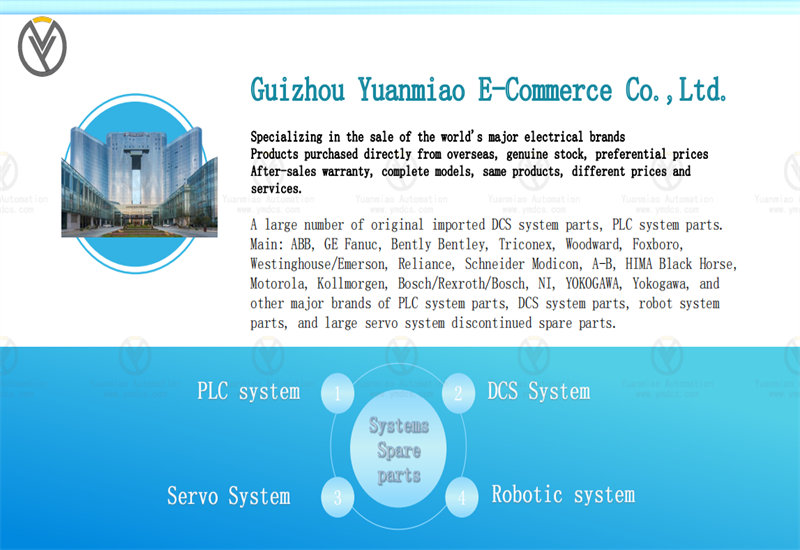
Main brands include: ABB, Bailey, GE, FOXBORO, Invensys TRICONEX, Bentley BENTLY, A-B Rockwell, EMERSON EMERSON, B&R, MOTOROLA, FUANC, REXROTH, KUKA, HONEYWELL, NI, DEIF, Yokogawa, WOODWARD WOODWARD, Ryan, SCHNEIDER SCHNEIDER, Yaskawa, MOOG, EPRO, PROSOFT and other major brands
The company focuses on DCS, PLC, robot, large servo four systems
The main products are various modules/cards, controllers, touch screens, servo drivers Company advantage: Supply imported original products, professional production of spare parts One year warranty, fast delivery time, complete supply !!! ① 24 hours email response (12 hours); ② For shipment outside Asia, please contact the seller.
Schneider Related Products
| 140EHC10500 | 140DDO85300 |
| 140EHC20200 | 140DIO33000 |
| 140HLI34000 | 140DSI35300 |
| 140MSB10100 | 140DVO85300 |
| 140NOE77101 | 140ECH10500 |
| 140NOM21100 | 140EIA92100 |
| 140NRP95400 | 140ERT85410 |
| 140NWM10000 | 140ERT85420 |
【 Disclaimer 】 We sell new products and discontinued products, independent channels to buy such special products. Guizhou Yuanmiao Automation Equipment Co., Ltd. is not an authorized distributor, dealer or representative of the products featured on this website. All product names/product images, trademarks, brands and microlabels used on this Website are the property of their respective owners. Descriptions, depictions or sales of products with such names/images, trademarks, brands and logos are for identification purposes only and do not imply any association or authorization with any rights holder.
This article is from the official website of Guizhou Yuanmiao Automation Equipment Co., LTD. Please attach this link: https://www.ymdcs.com/Schneider/
